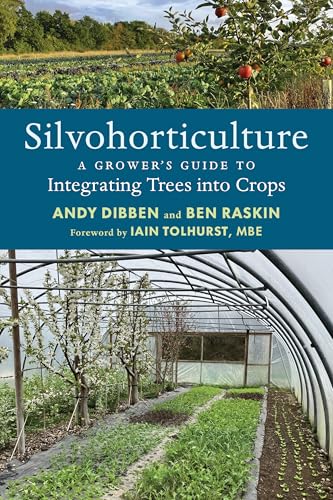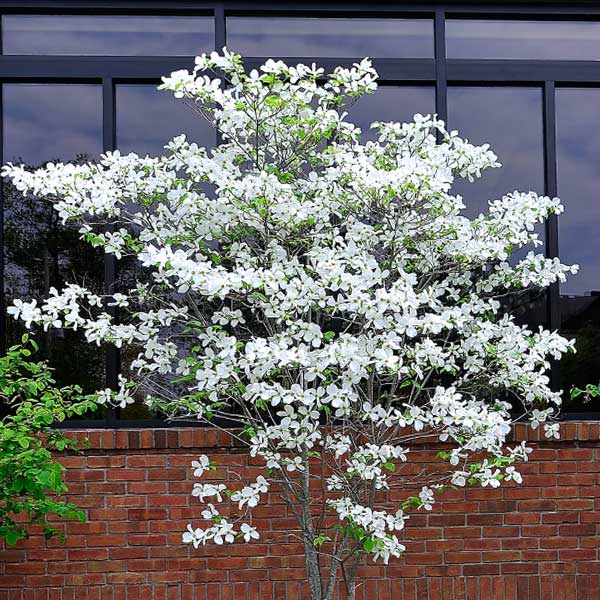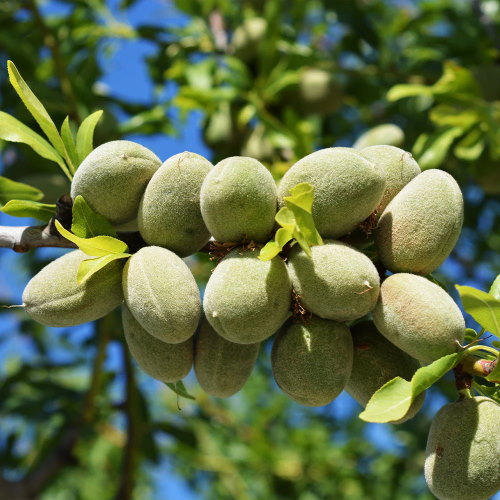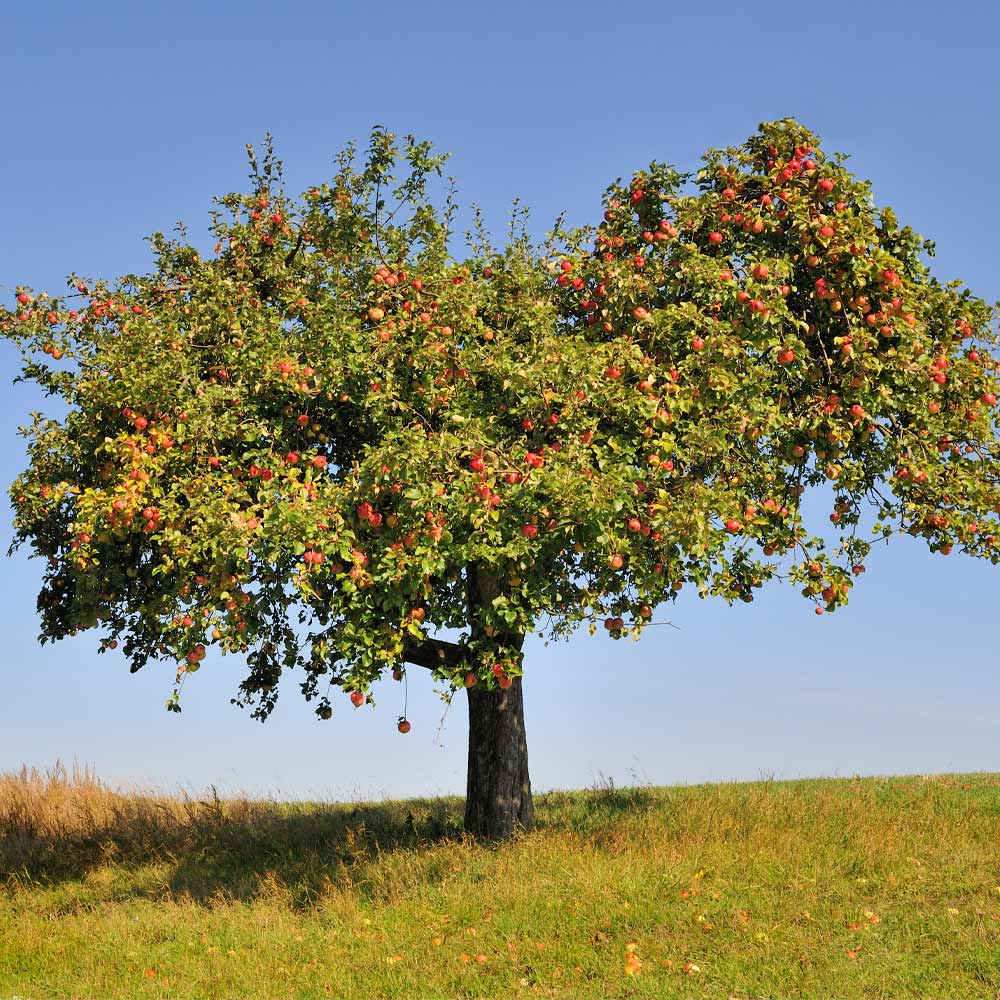4 reasons you should plant trees in a vegetable garden – plus experts reveal the secrets to help you reap the rewards
See how agroforestry principles can help boost your soil and harvests
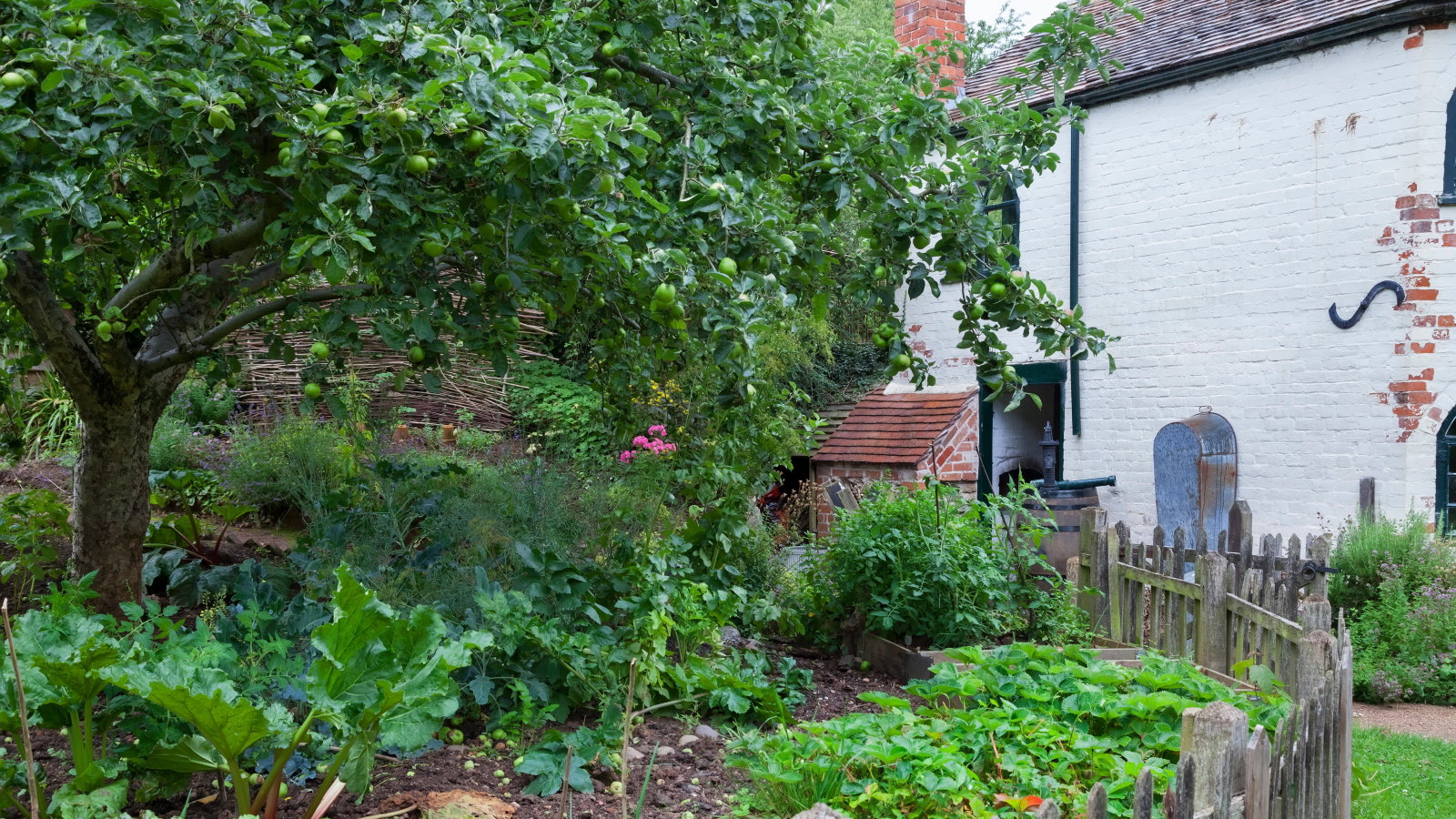

Trees growing among edibles can be a good thing. There are misconceptions that trees will do nothing but rob vegetables of water and nutrients and shade them out of existence. However, growing trees and edibles together can offer home growers benefits in vegetable gardens of any size.
Improved soil health and protection from extreme temperatures are just two potential advantages you can unlock. To reveal more of the positive benefits trees can bring to any vegetable garden, I spoke to Ben Raskin and Andy Dibben, co-authors of the book ‘Silvohorticulture’ and experienced growers with decades of horticultural experience.
They want to encourage more growers to plant trees in vegetable gardens and discuss four key benefits it can bring to help you have healthier crops and bigger harvests. Plus, they reveal tips and tricks for picking what and where to plant trees in your space.
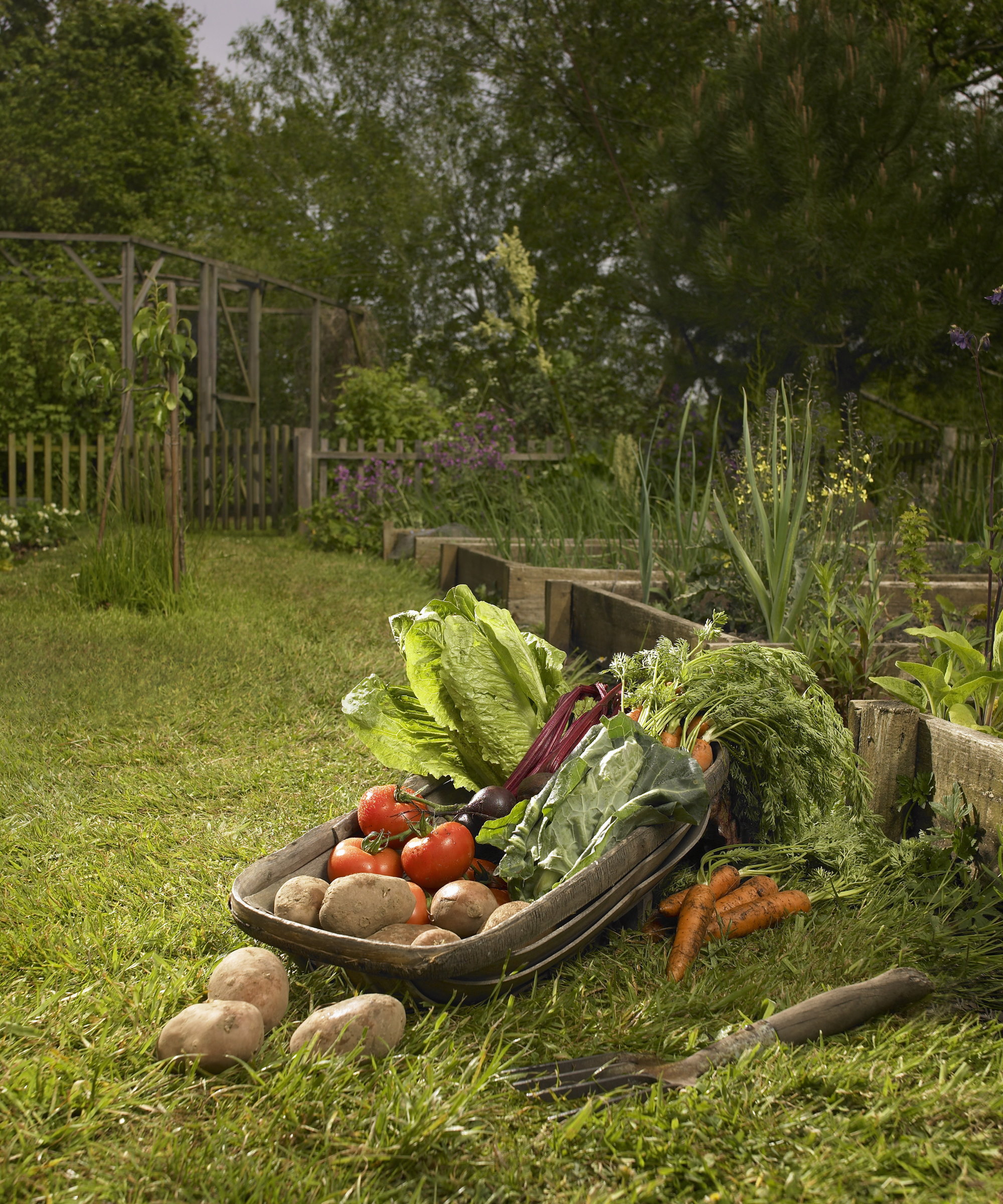
Should I plant trees in a vegetable garden?
Agroforestry involves growing trees and crops on the same land. The term may have been coined in the 20th century, but the system includes practices used by growers for centuries. Such a system can be implemented in home vegetable gardens to improve the soil and protect crops from weather.
4 reasons to plant trees in a vegetable garden
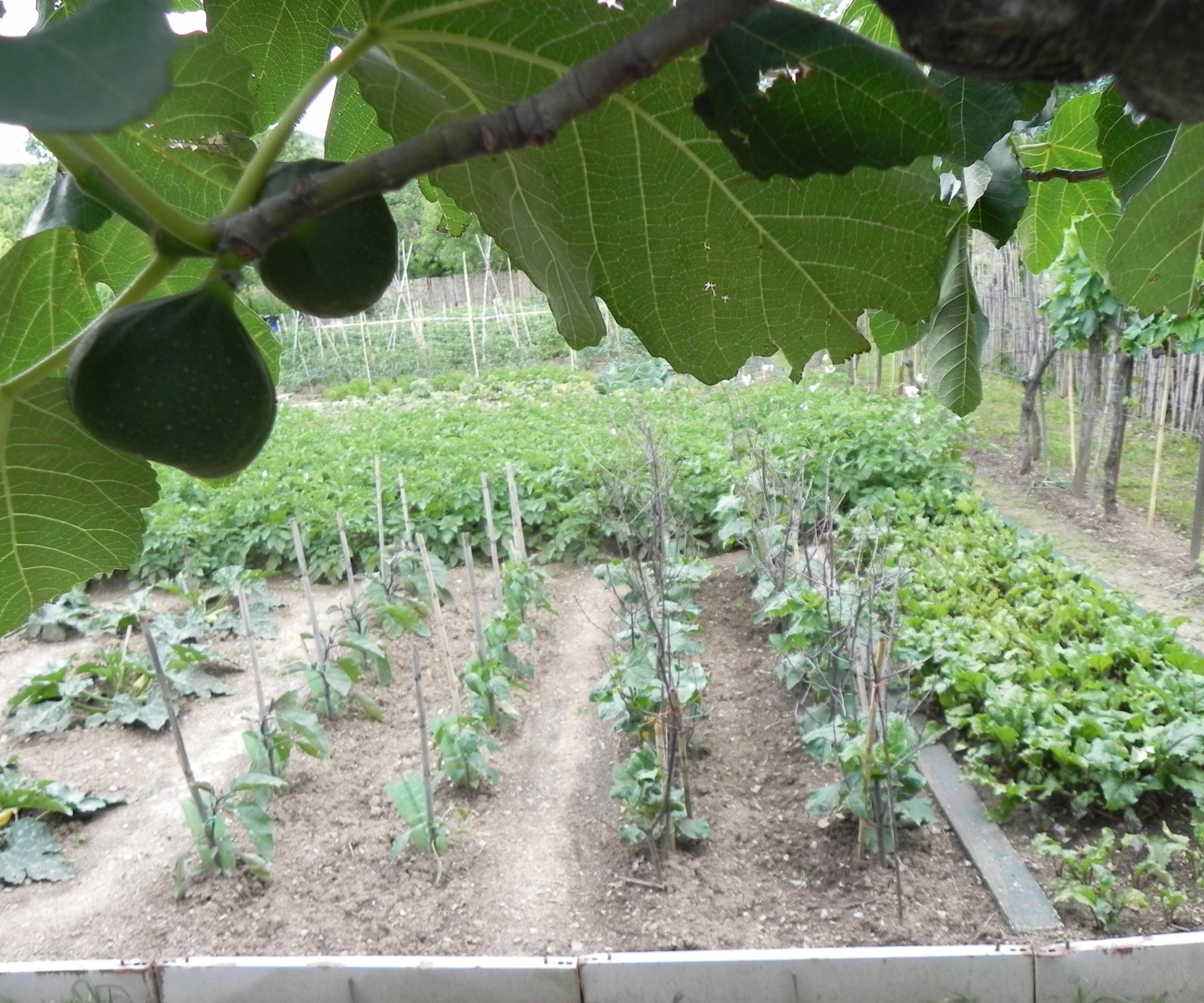
Adding trees to a vegetable garden improves soil health and helps any growing space become more productive. Planting trees in any kitchen garden or allotment won’t reduce your harvests but can give them a boost for the following reasons:
Soil
Planting trees in a vegetable plot helps improve your garden's soil and all vegetables will benefit from the increased microbial activity and nutrient levels. Market gardener Andy Dibben explains how trees and their roots ‘fuel a vibrant living soil’ that all crops can reap the rewards of.
‘Tree roots exude sugars from photosynthesis these are a food source for fungi and bacteria which are an important part of healthy soil,’ he says. ‘The leaves that fall from a tree are also a good way of adding organic matter to the soil.’
Design expertise in your inbox – from inspiring decorating ideas and beautiful celebrity homes to practical gardening advice and shopping round-ups.
Water
Vegetables want consistent moisture levels throughout their lifecycle. Too little means a struggle to produce a good crop and overwatering causes root rot. There are often ups and downs throughout the growing year, from floods in winter to drought periods when it can be challenging to keep the soil moist in summer.
Tree roots aerate the soil and create a healthy structure that helps regulate soil moisture levels. It means excess water is drained away while moisture is retained in dry periods. This benefits crops like broccoli, cabbage, lettuce, and celery, all of which thrive in stable, consistent moisture levels.
Even in extreme weather, such as floods, soil with a healthy structure, aerated by the tree’s roots, can help absorb excess water to prevent crops from rotting in standing water.
Wind
Trees can provide an effective windbreak and protect your vegetables. Trees can primarily act as a barrier to protect tall crops such as corn or climbing beans from physical damage in strong winds.
But even lower-growing vegetables can suffer from wind rock and have their stems snapped by strong gusts - I have lost zucchini plants in this manner before.
As well as physical damage, a wind barrier reduces transpiration. Plants lose a lot of water by transpiration and strong winds increase the rate of loss.
Shade
‘Not all vegetables prefer being in full sun all day long, many vegetables grow better with some shade during the day,’ says Andy Dibben. ‘Lettuce, spinach, radish, kale, beets and carrots all do better with a little shade.’
He adds: ‘Trees can cast valuable shade when temperatures get high, great for veg plants and the gardener.’
The valuable shade cast by trees can prevent crops such as lettuce, Swiss chard, spinach, and arugula from bolting in hot weather. Most crops will thrive best in a few hours of direct sunlight per day but benefit from protection from the afternoon sun, especially in hotter US hardiness zones.
Where to plant trees in a vegetable garden
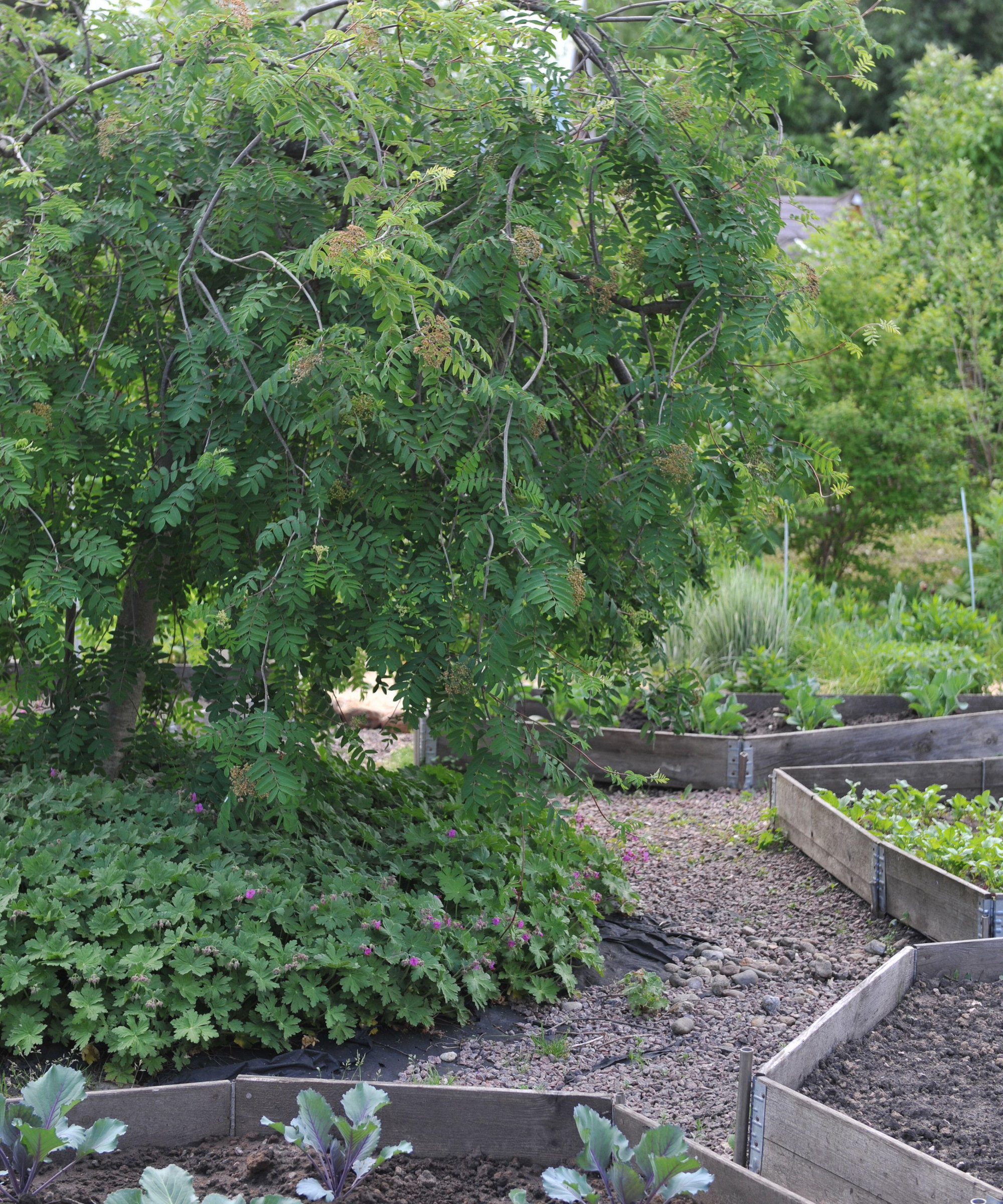
The choice of location and spacing when planting trees in a vegetable garden is key. Getting it right means reaping the benefits, but getting it wrong can lead to too much shade and increased competition from tree roots and vegetables for moisture and nutrients.
‘We recommend a space of at least 2x the height of the tree between trees to ensure enough light reaches the crops,’ says Ben Raskin, the head of horticulture and agroforestry at the Soil Association. ‘But the tree could be a trained stepover apple of just 60cm tall so there is still plenty of flexibility even within a small space.’
Any distance between the tree and the crop will depend on the size of the tree, the growth habit of its canopy, and the size of the roots. Ben Raskin uses apricot trees from his garden as an example of more troubling growth habits.
‘They [apricot trees] are spreading and have dense foliage with little light finding its way to the ground level as a result not much will grow under them,’ he says. ‘Whereas my almond trees have quite an upright habit with fine leaves and the raspberries we have underneath do really well.’
Trees planted for wind protection and shade can be planted further away from vegetables. Reaping the rewards of soil health and water management involves planting trees closer to your edible crops.
Planting fruit trees is a great choice for vegetable gardens. They can even be suitable for smaller vegetable gardens as you can get ones on dwarf rootstocks. Not only are they compact, but such rootstocks are less competitive for water and nutrients. Plus you get another edible crop from the tree.
An alternative for smaller vegetable gardens is dogwoods, which Ben Raskin hails as being ‘relatively small’ and suitable for coppicing to ‘prevent it getting too big’ for the space.
Integrating trees with vegetables can help boost harvests, but what would the experts recommend if you are starting a vegetable garden and want to maximize the space?
For the most harvests, Andy Dibben advises: ‘Fruit trees with soft fruit immediately beneath them, shade-tolerant vegetables a little further away and sun-loving veg furthest away from the trees.’
Mulching plays a key role in maintaining a healthy vegetable garden. It boosts soil fertility and structure and helps to grow healthy vegetables. Mulching a vegetable garden is a task for the fall or spring, adding a two-inch thick layer of organic matter, such as compost, well-rotted manure, or leaf mold.

Drew has worked as a writer since 2008 and was also a professional gardener for many years. As a trained horticulturist, he worked in prestigious historic gardens, including Hanbury Hall and the world-famous Hidcote Manor Garden. He also spent time as a specialist kitchen gardener at Soho Farmhouse and Netherby Hall, where he grew vegetables, fruit, herbs, and cut flowers for restaurants. Drew has written for numerous print and online publications and is an allotment holder and garden blogger. He is shortlisted for the Digital Gardening Writer of the Year at the 2025 Garden Media Guild Awards.
